Visit London’s Shed of the Year
Carpenter, painter, musician and sculptor Joel Bird started working on his garden shed four years ago. “It was like an experiment, really,” Bird says. He’d finished renovating the house he’d bought in Tottenham, north London, and wanted to create a serene and functional workspace in which he could produce music and paint. In addition to a workspace, he also wanted a garden, so he designed his shed with a garden on the roof. Over the past four years, the roof garden has become more and more elaborate, with a raised bed for vegetables, solar panels and an efficient drainage system.
Bird enjoys the coziness and functionality of his shed, but he wasn’t prepared for the publicity it began to receive this year. After appearing on George Clarke’s Amazing Spaces on British TV and winning the show’s Shed of the Year competition, he was flooded with requests for sheds like his. “After the TV show, I was getting lots and lots of calls, and I had to employ a couple of people to help,” he says. “Now it’s a business.”
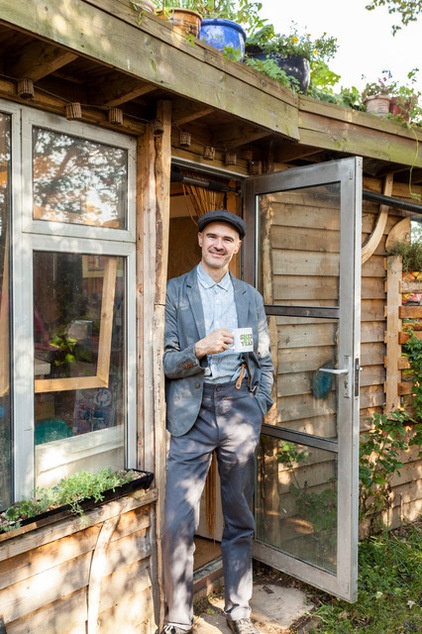
Shed at a Glance
Who creates here: Joel Bird, The Shed Builder
Location: Tottenham, north London
Year built: 2010
Size: 2 rooms
“I genuinely spend more time in the shed than in the house,” Bird says. After seeing many friends struggle to continue their creative pursuits with London’s high rents, Bird, who is from Liverpool, sought an economical workspace. His shed thus has become his home office, recording studio, art studio and urban oasis in one.
A love of nature was a part of his upbringing, as he and his family were keen bird-watchers. “I like to be around nature,” he says. “You work better; you see better; you draw better.”
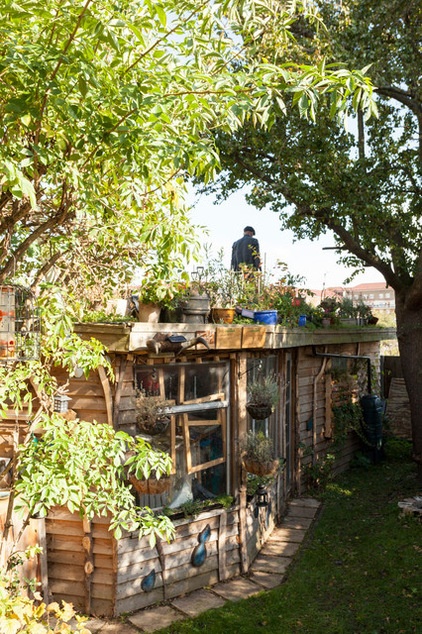
The shed is a triumph of recycling. Bird purchased the main structure from a builder’s yard, but he also used many materials left over from renovating his house. The windows and doors were taken from the house, and a lot of the siding is recycled fencing. He also used soil from the yard to create the rooftop beds.
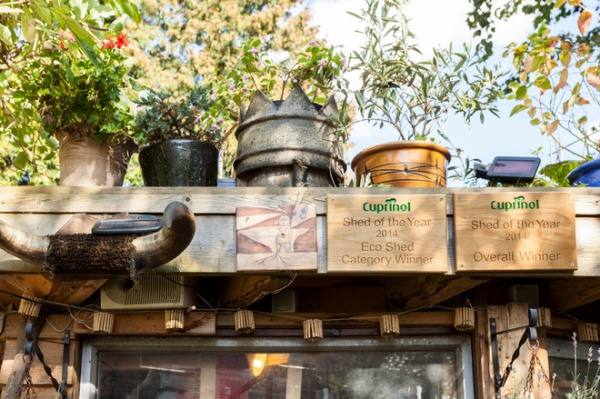
The entrance to the shed displays Bird’s Shed of the Year 2014 winner’s plaques. More than 2,000 entries were recorded for this year’s competition.
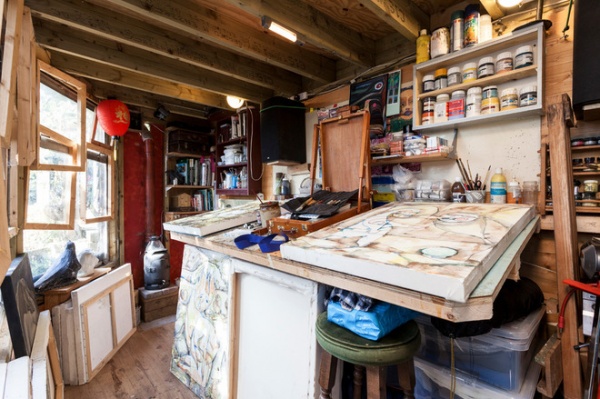
The front room has been turned into his art studio, where he paints and sculpts. Solar panels on the roof power a couple of car batteries, which he uses to light the studio.
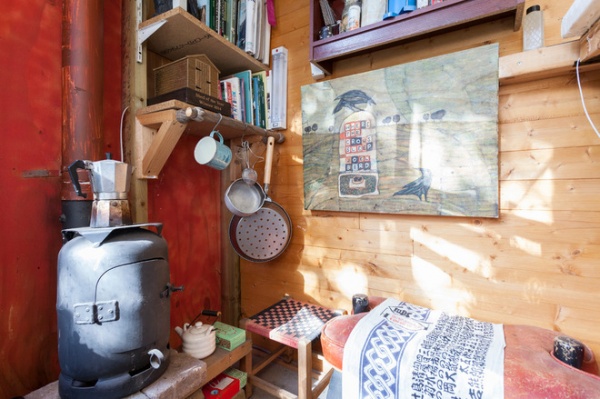
Bird’s little wood-burning stove, purchased on eBay, is powerful enough to keep the inside of the shed toasty in the winter. “Wood burners are surprisingly strong,” he says. He lights the stove with wood left over from his house renovation. He also burns wood discards from sheds he has built for other people.
Though his house is steps away, he uses the stove to make tea and cook small meals. He also prepares vegetables from his rooftop garden. “It’s nice to sit right next to the veg and be able to just pick them,” he says.
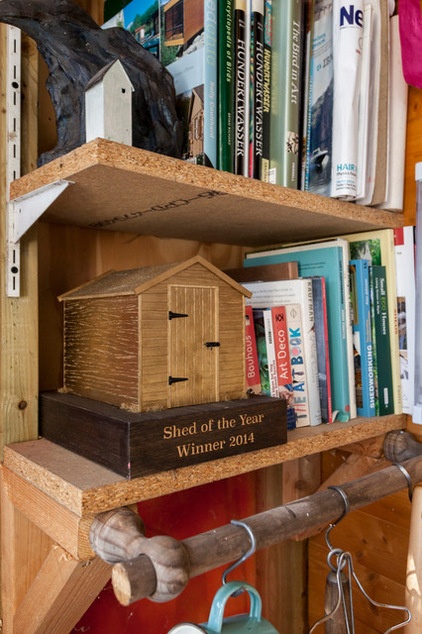
Bird displays his Shed of the Year 2014 award on his shelf in the art studio. “Entering the competition was originally just a bit of fun. But then it seemed to escalate and get bigger and bigger, and then they said it was going to be a TV series and asked if they could come and film,” he recalls. He says he enjoyed the filming process and meeting everyone.
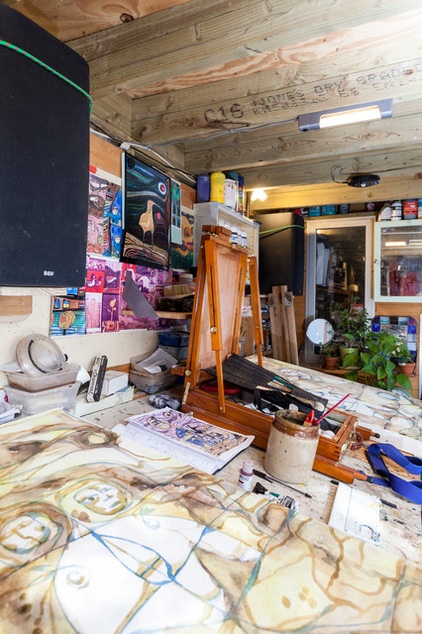
His art studio in the front of the shed leads to his recording studio in back.
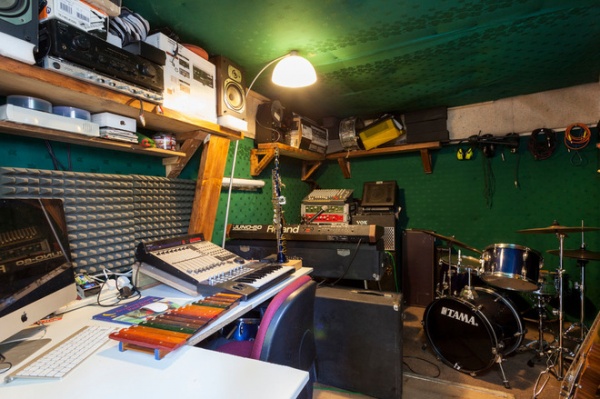
Bird soundproofed the music studio walls with soundboards. Also, he says, “the soil on the roof is a really good sound and heat insulator.”
The solar panels, which generate about 12 volts, are more than enough for lighting but not enough to power the equipment in the music studio.
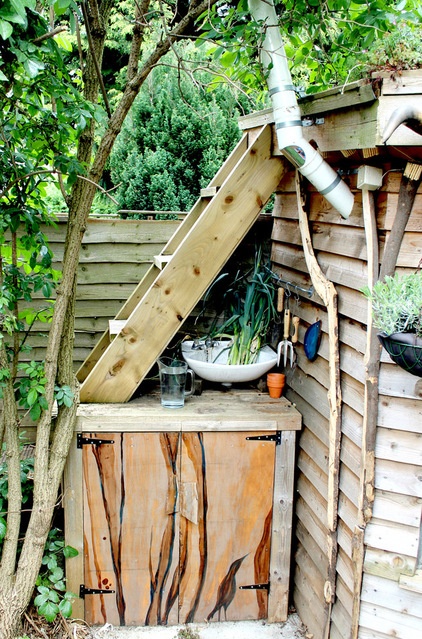
The roof garden can be accessed from the wooden stairs on the front left side of the shed. Bird’s rooftop garden now has healthy crops of seasonal vegetables. “The tomatoes were great this year. I had them every day,” he says.
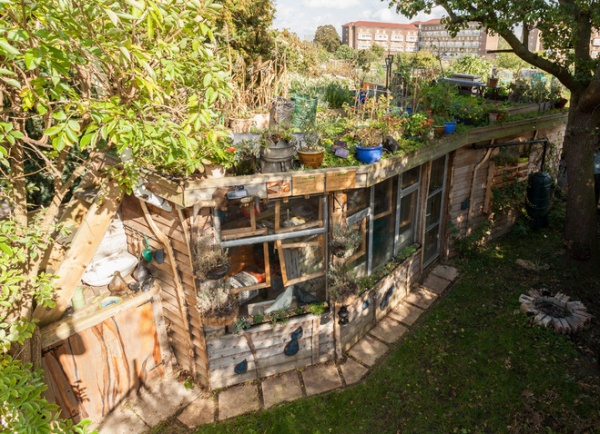
The surface area of the roof is about 160 square feet. “There’s also a bike station around the back where I repair my bike,” Bird says.
“The majority of the structure is simple in principle,” he adds. “You just have to make sure it’s structurally sound and waterproof.” He made the shed watertight using felt, which works as a waterproof membrane.
He says the roof joists on the shed had to be extra tight to support the weight of the garden.
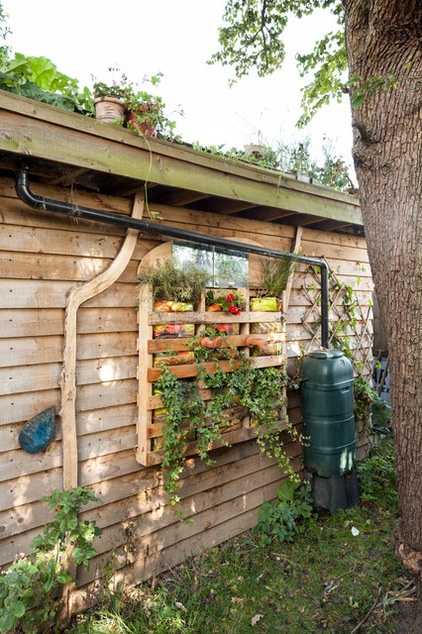
Bird included an efficient drainage and watering system. “The water comes off the roof into a channel and then goes into a downpipe, which waters plants on the way down,” he describes. It’s then collected in a barrel.
The plants under the pipe are in bags held upright in a frame. He rotates the plant selection; at the moment he has rosemary, jasmine and thyme in there, as well as some ivy, “to make it more green,” he says.
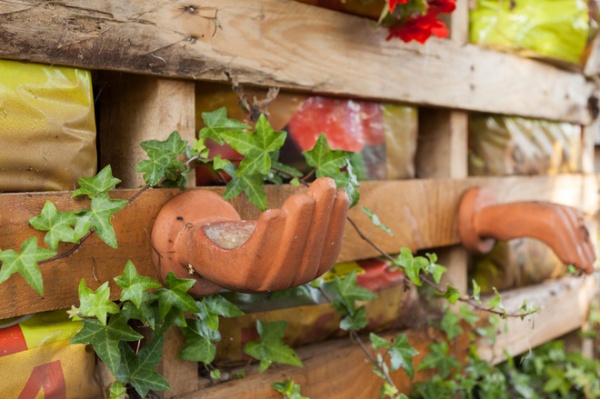
The terra-cotta hands on the wall seem to suggest some sort of symbolic message, but, Bird says, “it’s nothing like that. They were here when I bought the house.” They had belonged to the previous owner, an older man, and Bird wished to keep some of his things in homage to him. “I liked him,” he says. So he incorporated some of the home’s original spirit into his new shed.
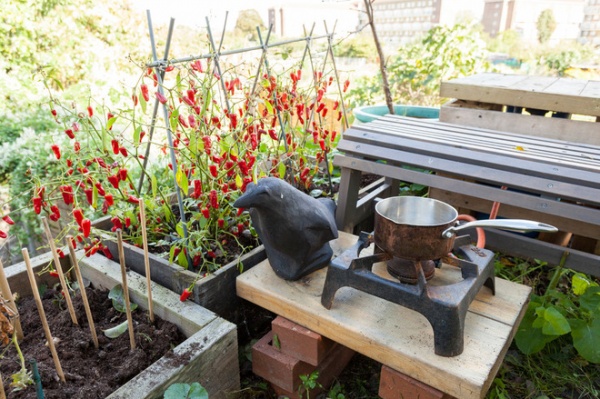
In addition to tomatoes, Bird has been growing corn, potatoes, strawberries, onions, chiles, broccoli, zucchini, blueberries and blackberries. He maintains an herb garden year-round.
Bird says many of his homegrown vegetables, such as the tomatoes and corn, are much better than what he could get at the supermarket. “It’s a bit surprising how easy it is to grow them,” he says.
The ceramic birds found around the shed are his creations.
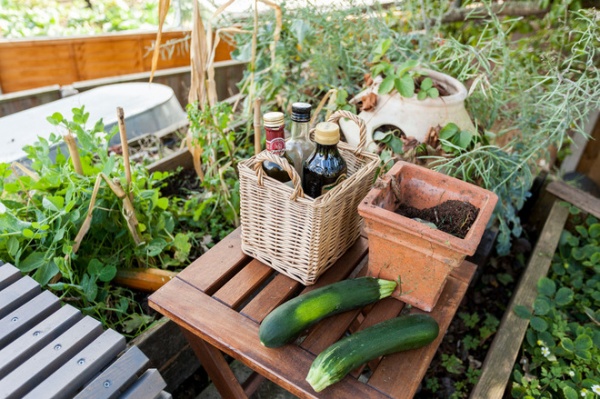
When deciding which fruits and vegetables to plant, Bird experimented to see what worked best. “In the end I chose stuff that was nicer than in the supermarket,” he says. He began planting potatoes to use as an ingredient in scouse, a classic Liverpudlian meat stew. Soon he was expanding his repertoire.
“I try to let the plants on the roof overgrow sometimes,” he says. “There are wildflowers up there, because I’m trying to attract bees.”
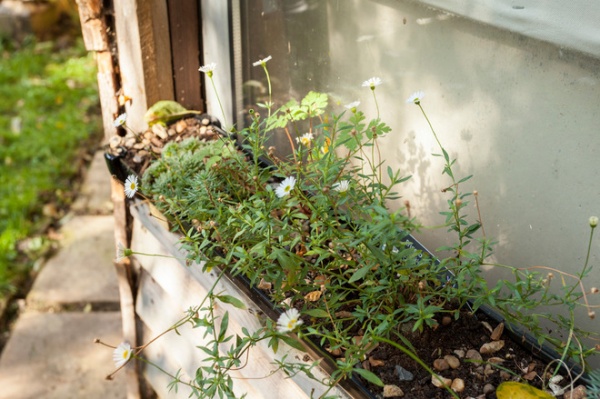
Bird repurposed an old drainpipe to grow alpine plants while ensuring that the drainage could pass water on to other parts of the shed. “There’s loads of gravel in the soil, so the water just flows through,” he says.
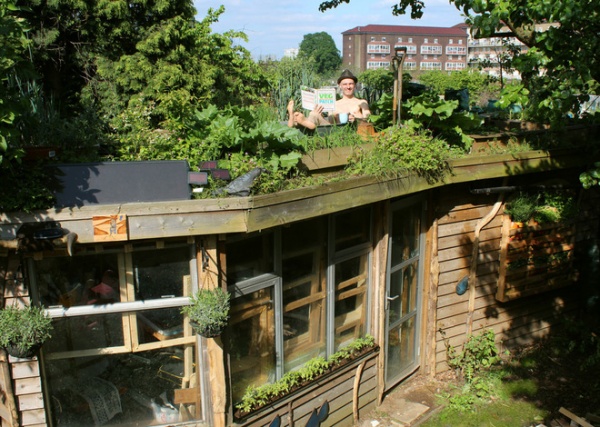
Bird’s shed cost him about $800 to make, and the rewards are plentiful, particularly in the summer, when he can be found soaking up the sun in his tin tub. With all the fresh vegetables and fruits, as well as the studio spaces, the shed provides a welcome and sustainable escape from busy city life.
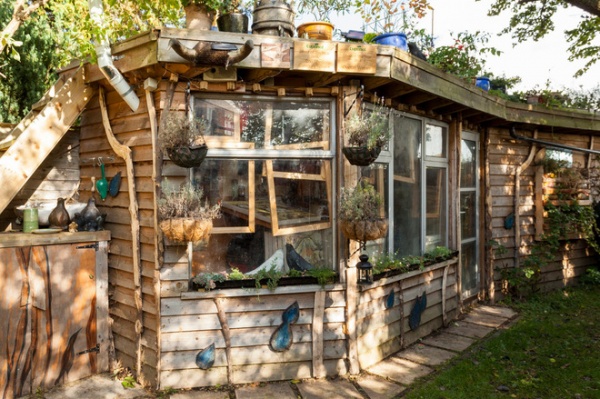
My Houzz is a series in which we visit and photograph creative, personality-filled homes and the people who inhabit them. Share your home with us and see more projects.
Browse more homes by style:
Small Homes | Colorful Homes | Eclectic Homes | Modern Homes | Contemporary Homes | Midcentury Homes | Ranch Homes | Traditional Homes | Barn Homes | Townhouses | Apartments | Lofts | Vacation Homes












